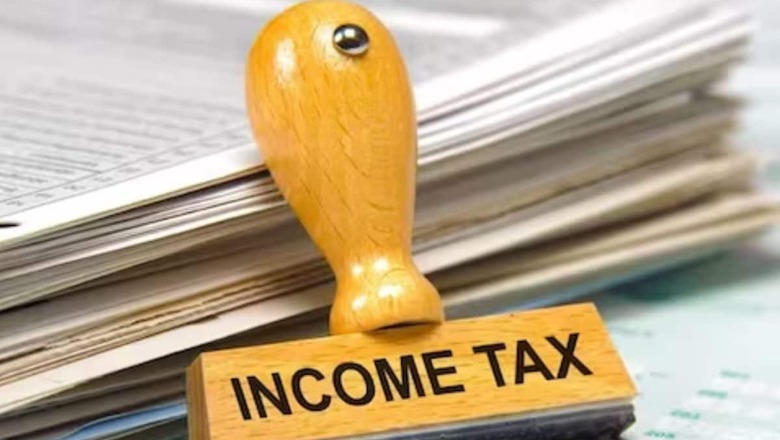
views
Written By Alok Agarwal & Anmol Nathani:
At a time when the Lok Sabha elections are due around May this year, Union Finance Minister Nirmala Sitharaman is scheduled to present an interim budget on February 1, 2024. The FM recently said there would be no major announcements in this interim budget.
Despite uncertainties in the global economy, India’s growth outlook remains positive. Considering multiple global factors such as wars, geopolitical tensions, etc., India will have to rely on its own domestic demand to drive its growth, specifically private consumption and investment spending. Hence, although not a full Budget, it is not expected to be a low-key either. Attention may be directed towards aspects such as making the new tax regime more lucrative, reducing complications, ensuring robust tax collection and swift resolution of litigations.
Top expectations by individual taxpayers from Budget 2024:
1) Changes in new tax regime:
Surcharge rates
Last year’s Budget emphasised making the new tax regime more appealing and also made the new regime the default option. While the benefits of these changes in tax rates under the new regime have given relief to both lower income and very high-income earners, the income group of Rs 50 lakh to Rs 5 crore were not provided any major relief. The current tax surcharge rate under the new regime is also same for the more than 2 crore income earners. To address these concerns, the reduction in surcharge rates may be expected as follows:
- Taxable Income — Current surcharge — Expected surcharge
- INR 50 Lakhs to INR 1 Crore — 10% — 5%
- INR 1 Crore to INR 2 Crore — 15% — 10%
- INR 2 Crore to INR 5 Crore — 25% — 15%
- Exceeding INR 5 Crore — 25% — 25%.
Standard Deduction
While the focus under the new tax regime is to ensure that simplified rules are followed with no deductions being analysed and claimed, the government had allowed standard deduction under new regime as well. Since the salaried class does not get any expense and investment deductions under the new regime and considering the continuous increase in cost of living, it is expected that this standard deduction will be increased from Rs 50,000 to a higher lumpsum amount and if not, then bare minimum could be increased each year in alignment with the cost inflation index.
2) Changes in old tax regime:
Metro cities for HRA
Despite the rapid growth and elevated cost of living in all Tier 1 and Tier 2 cities, the Income Tax provisions presently limit the higher House Rent Allowance (HRA) exemption percentage of 50 per cent to only Delhi, Mumbai, Chennai, and Kolkata. Hence, taxpayers residing in other Tier 1 / 2 cities which, based on thresholds such as population, are defined as Metros (like Bengaluru, NCR, Hyderabad, Pune, etc), are also expected to get a higher (50 per cent) exemption for HRA instead of the existing 40 per cent.
Home loan Interest deduction
Presently, a new home loan borrower may deduct the interest paid on the loan from his taxable income (e.g. salary income) up to maximum of Rs 2 lakh. Compared to actual interest expenditure, this limit is very small, e.g. even for a long-paying term of 20 years for a loan of Rs 50 lakh, the annual interest could work out to more than Rs 4 lakh. To address this concern and in view of such financial burden caused to salaried employees, this existing limit may be increased to Rs 3,00,000.
Deduction for health insurance premium
The cost of health insurance premiums has spiked after COVID-19, and has significantly impacted individuals’ disposable incomes. To address this surge in costs, it may be expected that the current exemption limits for payment of mediclaim insurance be increased from Rs 25,000/ 50,000 to Rs 50,000/ 1,00,000 in view of the rising costs. Additionally, the limit for preventive health check-ups of Rs 5,000 included in the above should be carved out separately.
Incentivise purchase and use of electric vehicle
The interest on loans sanctioned to purchase electric vehicles up to March 31, 2023, is eligible for maximum deduction of up to Rs 1.5 lakh per year. Unfortunately, this timeline was not extended in the last budget. Considering that EVs provide environmental benefits, reduce emissions and carbon footprint, and offer low operating costs, there is a need to motivate all vehicle buyers to move towards EVs. Hence it may be expected that FM will extend the timeline for this deduction.
3) Ease of obligations for non-residents:
E-Verification Process for Tax Returns
E-verification of tax returns is currently limited to options such as Aadhaar OTPs to Indian mobile numbers, net banking, etc. In absence of overseas mobile numbers being allowed for this verification process, manually signed ITR V, need not be submitted within 30 days of filing the tax return. Introducing an authentication process with foreign mobile numbers for such non-resident individuals could minimise paperwork and administrative efforts, and unnecessary complications for those who end up missing the 30-day timeline.
Issues for claiming relief from double taxation
Current revised/ belated return deadline is 31 December for Individuals (i.e. 3 months before the end of assessment year). This leads to a challenge especially for individuals claiming foreign tax credit in India for taxes paid in the countries not following financial year as their tax year.
The tax returns of those jurisdictions are not finalised before the due date in India, leading to loss of credit claims. e.g. in case of US where tax year is calendar year, if tax credit needs to be claimed for Jan to Mar 2023 period, the US tax return would not be ready until 31 Dec 2023 (current deadline of revised return for FY 2023-24). Relief from this issue is long awaited.
4) Other key expectations:
Exemption in respect of provident fund contribution already taxed
Employer annual contributions exceeding INR 7.5 lakh to the Provident Fund, Superannuation, and National Pension System, are taxable in the hands of the employee. If the conditions for exemption at the stage of withdrawal of accumulated PF balance are not met, e.g., continuous service of less than 5 years, there is a risk of the same contribution being unintendedly liable to tax twice – once during the contribution period and again at the withdrawal stage. Clarity in this regard may be expected.
Aligning exemption of NPS contribution with PF contributions
Employer contribution to NPS is exempt from tax, subject to maximum of 10 per cent of salary, whereas for PF employer contribution, it is 12 per cent of salary. While, as mentioned above, there is an overall cap of Rs 7.5 lakh beyond which employer contributions are taxable, for most taxpayers this limit is not breached. Hence there is a demand to align the NPS exemption to a bare minimum 12 per cent, which will motivate individuals to invest more in NPS and improve the financial security of their post-retirement life.
(Alok Agarwal is partner with Deloitte Touche & Tohmatsu India LLP and Anmol Nathani is deputy manager with Deloitte Touche & Tohmatsu India LLP. Views expressed are personal.)















Comments
0 comment